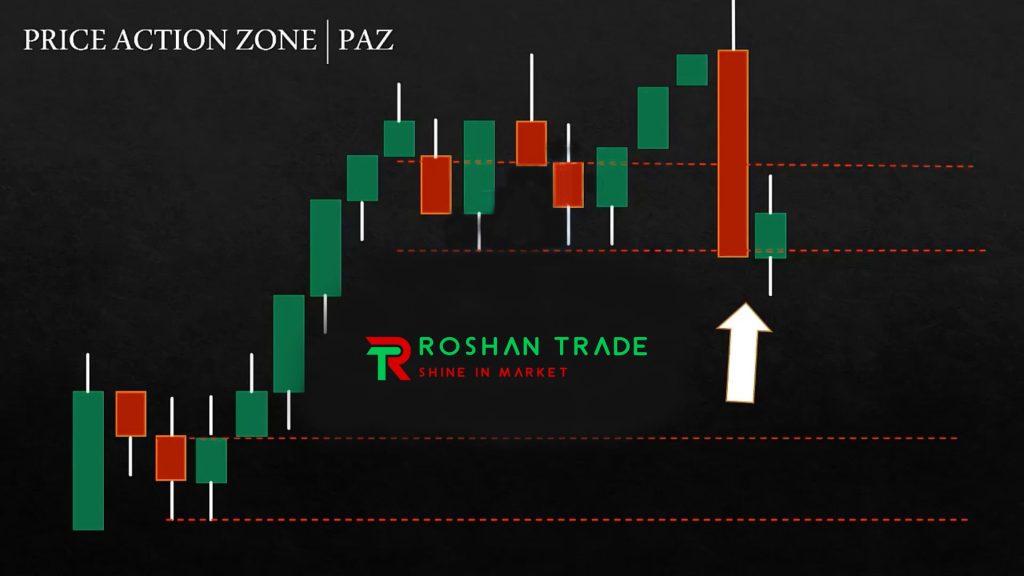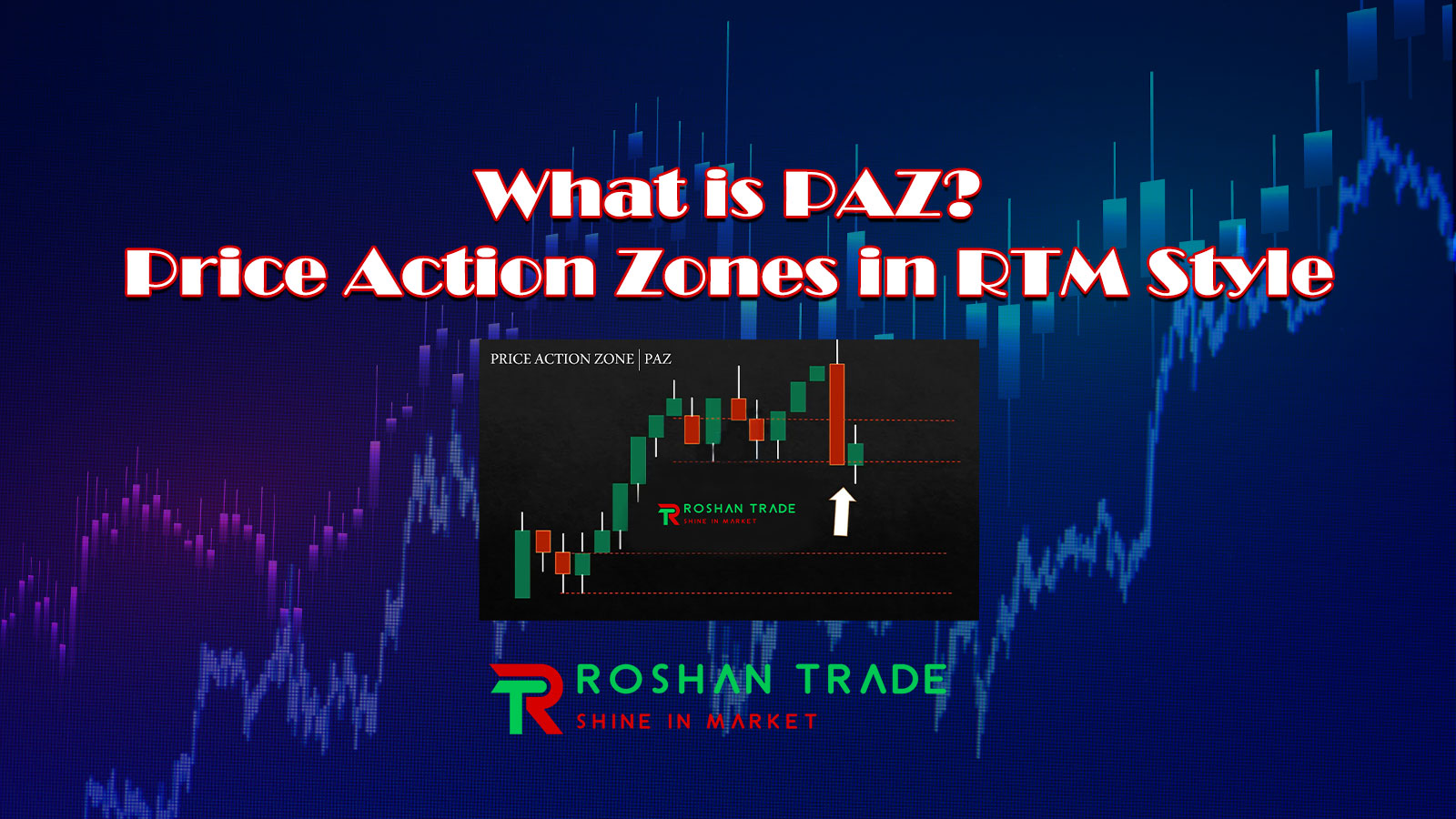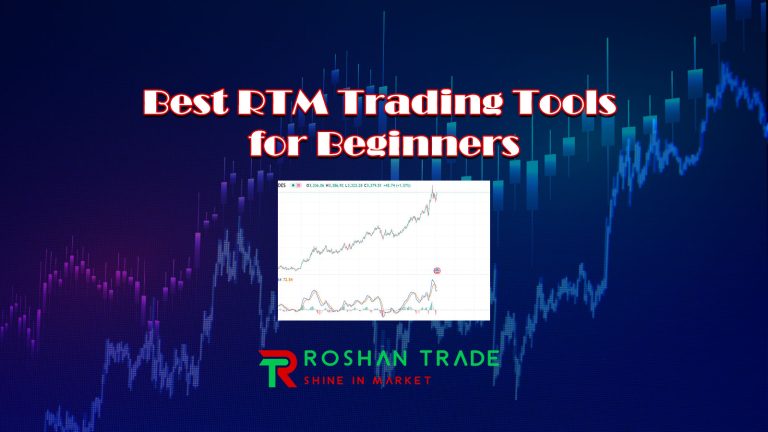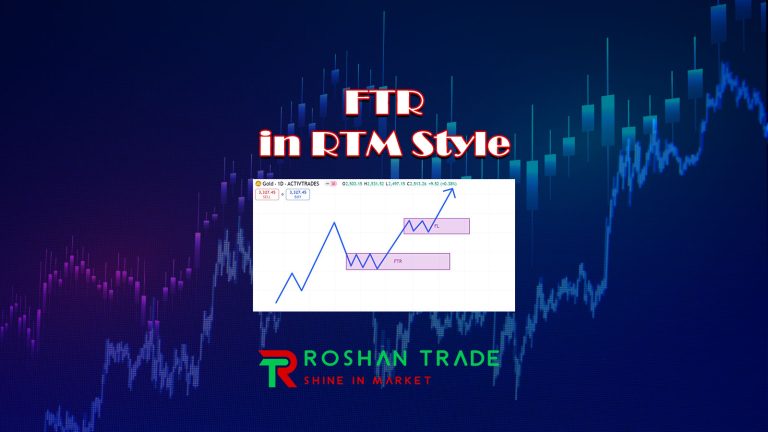You have probably seen two price patterns in a row in the RTM style and identified them well, but you may not know what the area is called where the price is between the two patterns, what it is, and how you can use it. PAZ or Price Action Zone in RTM Style is the area where the price sits between two patterns.
For traders like you who use the RTM style in their trades, identifying and understanding these zones is very important. Just as a trader follows the complexities of the market with their eyes, PAZ provides reference points that are extremely valuable in aligning trades with prevailing trends. When PAZ integrates into the RTM strategy—in other words, an approach based on the idea that prices ultimately return to their mean or average—it plays an even more significant role.
In the RTM style, our trading philosophy is based on the principle that markets operate within a range and oscillate around it before returning to the mean. This means our emphasis is on how the price fluctuates up and down due to various factors, including market sentiment, news, and economic indicators. Now, PAZ, which we intend to examine in this article, identifies high-probability scenarios in which the price movement indicates that a return to the mean is imminent.
Identifying PAZ
Identifying PAZ requires you to know all the RTM and price action patterns! Therefore, it could be said that one of the hardest patterns in the RTM style is this PAZ, which frustrates traders when trying to identify it. Don’t be discouraged by thinking that this task is too hard—no! You can read everything you need to know about all the patterns of the RTM style on our website and learn how to use each of them.
The best part is that after identifying these patterns, you can easily see PAZ on the chart, and you can use this pattern as easily as drinking water. Traders usually start by examining historical price action patterns over various time frames to determine where PAZ has occurred, thereby practicing this skill. For example, in a random chart, if the price acts several times as support or resistance at a specific price level, and then returns to this level, it becomes a price action area that you should pay more attention to.(as you can see in the image)

Considering multiple time frames enhances trend analysis. A trader might start their analysis with a weekly chart to identify long-term trends and resistance levels, then switch to a daily or hourly chart to seek more precise entry opportunities. This layered strategy ensures that traders align their strategies with larger trends in broader time frames while also profiting from short-term volatility.
If you want to recognize the power of zones, you must consider trading volume. This component can significantly impact your decision-making in any area. Price movement accompanied by high volume often indicates real interest from market participants and increases the likelihood of price behavior aligning with expectations from that area. If the price returns to a PAZ with increasing volume, it confirms that there is strong buying or selling interest at that level. In contrast, low volume as the price approaches a PAZ may indicate weakness and can lead to increased caution, as it reflects less confidence in the price movement.
Strategic Trading with Price Action Zones
Now that you are familiar with how to detect PAZ, you certainly want to know how to use this pattern for your trades to be profitable. For this, you need to conduct precise identification, have suitable entry and exit points in your strategy, and cultivate the mindset of a professional trader to navigate the psychological games of the market.
When approaching a price action area, a trader may look for specific candlestick patterns that indicate potential reversals. Patterns such as pin bars or engulfing candles can act as powerful signals when they form within a PAZ, indicating a high probability of price direction change. Traders increase their chances of success by entering the trade after confirming such patterns while effectively managing risk.
You can also enter breakout trades around price action areas, as they can yield good profits. When the price decisively moves beyond a PAZ—especially if accompanied by increased volume—it can signal trend continuation. Traders can position themselves to take advantage of the momentum and strategically place stop-loss orders just below the new support level or above the new resistance levels.
Additionally, combining price action areas with other technical tools can enhance a trader’s edge. For instance, integrating moving averages can assist in identifying the overall trend when using PAZ for entry points. This way, traders can reduce their exposure to emotional trading volatility by using systematic, technical analysis-based methods.
Conclusion
In this article, we became familiar with PAZ and explored how to identify it on price charts and how to trade it. Price action areas, when understood and applied correctly, can significantly impact a trader’s performance and provide a comprehensive framework for informed and strategic decision-making that leads to positive outcomes. By focusing on identifying price action areas, understanding market structure, monitoring volume, and managing risk effectively, traders can have a systematic approach to trading in the markets. This approach allows them to stay in the market for an extended period without losing their initial capital. If you can preserve your capital, you will also discover the ways to profit from the market. So, do not rush.
PAZ enables traders to align their strategies with the natural rhythms of the market, increasing their chances of successful trades. However, not everyone can profit from this strategy—why? Because they do not establish clear take profit and stop loss levels for their trades, and in the near future, when they begin trading in the RTM style, they may face a margin call. Risk management is an integral part of trading, so focus more on it after your technical analysis.
Traders should adopt an appropriate position size relative to their capital and risk tolerance. By placing stop losses outside of the PAZ, traders can minimize the adverse effects of normal price fluctuations, allowing them to withstand transient movements while maintaining profitable trades. Proper risk management not only safeguards your capital but also enhances your trading consistency and longevity in the market.








